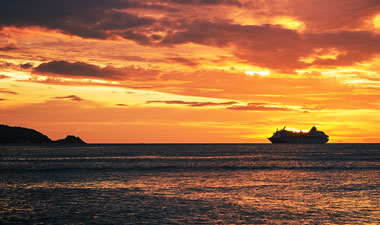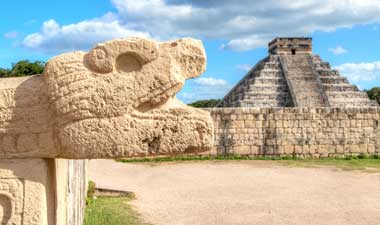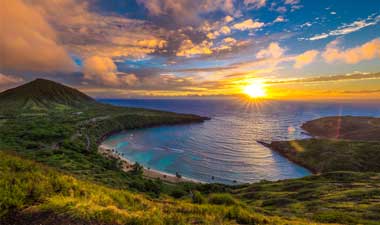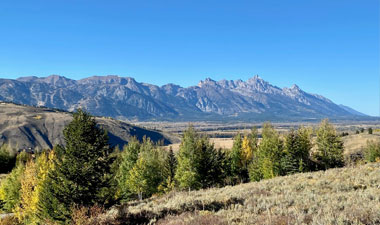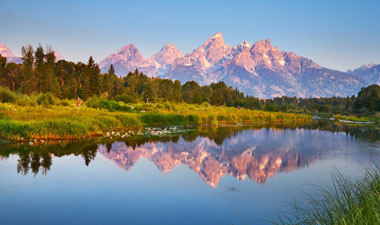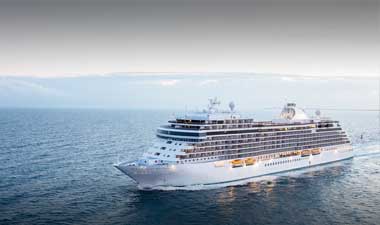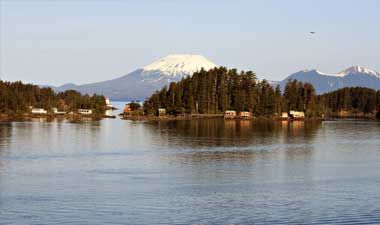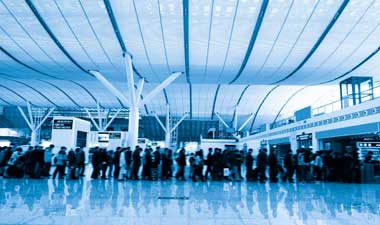I am spending a couple of weeks in Brazil, visiting various places. My first stop is Brasilia, the national capital.
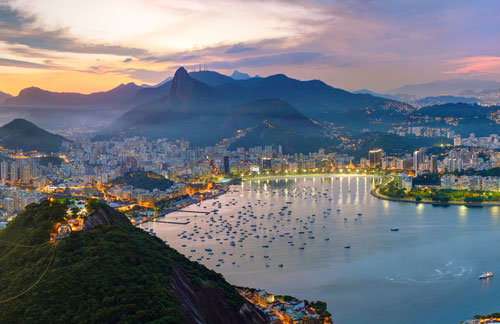 Background: For almost 200 years, the capital of Brazil was Rio de Janeiro. Ever since Brazil became independent of Portugal in 1822, many intellectuals wanted to move the capital to a location that was more central and that would help develop Brazil's vast interior. In 1891 congress set aside the land that Brasilia occupies today, but nothing happened. It was not until 1955 when then-president Juscelino Kubitschek pushed through a vision to create a capital city from scratch in the interior of the country, with a firm timeline to inaugurate the city in 1960. The task of building Brasilia was mind-boggling. The site that Brasilia occupies today was a vast wilderness with no roads to bring in the materials and the workers needed to make the city a reality. President Kubitschek had the good fortune to hire 3 brilliant men and appoint them to the task - Urban Planner Lucio Costa, the world-famous architect Oscar Niemeyer, and the best landscape architect of the 20th century, Roberto Burle Marx. Thousands of workers were brought in, much of the construction materials were brought in by air, and crews worked 18 hour days to make Brasilia open on time. Believe it or not, Brasilia was inaugurated on 21 April 1960, on schedule. Photos of Brasilia instantly captured the world's attention, and a landmark was born. Of all the cities created in the 20th century, only Brasilia was voted World Heritage Site by Unesco. The city's distinctive architecture, original design, unique urban planning all come together to create an unforgettable place.
Background: For almost 200 years, the capital of Brazil was Rio de Janeiro. Ever since Brazil became independent of Portugal in 1822, many intellectuals wanted to move the capital to a location that was more central and that would help develop Brazil's vast interior. In 1891 congress set aside the land that Brasilia occupies today, but nothing happened. It was not until 1955 when then-president Juscelino Kubitschek pushed through a vision to create a capital city from scratch in the interior of the country, with a firm timeline to inaugurate the city in 1960. The task of building Brasilia was mind-boggling. The site that Brasilia occupies today was a vast wilderness with no roads to bring in the materials and the workers needed to make the city a reality. President Kubitschek had the good fortune to hire 3 brilliant men and appoint them to the task - Urban Planner Lucio Costa, the world-famous architect Oscar Niemeyer, and the best landscape architect of the 20th century, Roberto Burle Marx. Thousands of workers were brought in, much of the construction materials were brought in by air, and crews worked 18 hour days to make Brasilia open on time. Believe it or not, Brasilia was inaugurated on 21 April 1960, on schedule. Photos of Brasilia instantly captured the world's attention, and a landmark was born. Of all the cities created in the 20th century, only Brasilia was voted World Heritage Site by Unesco. The city's distinctive architecture, original design, unique urban planning all come together to create an unforgettable place.
Sights: Brasilia is spread out, and designed roughly like an airplane, viewed from above. There are two wings that house the residents of the city, and the main 'fuselage' section of the airplane houses all the ministries, the government buildings, and the most famous monuments. A good place to start is the Praca dos Tres Poderes, or the square of 3 powers - which is flanked by the Supreme Court, Palacio do Planalto (Brazil's White House) and the Congress building, with its unique half domes, one facing up and one facing down. Today, you can visit Planalto palace on Sundays, and congress at certain days/hours of the week.
Two of my favorite buildings are the Palacio do Itamaraty, or Ministry of Foreign Affairs, where foreign dignataries are welcomed. The building has vast spaces with no supporting columns and a unique spiral staircase which gives you vertigo and served as the inspiration for the glass stairs inside the Apple stores.
The other must-see building is the Cathedral, shaped like a crown of thorns. The inside is dazzling, a vast space illuminated by light coming through multi-colored stained glass. Do not miss the aluminum angels hanging from the ceiling, that float over the faithful. The other religious building I recommend is the Dom Bosco church, an amazing space filled entirely with blue light, reflected through thousands of stained glass panels of different shades of blue and unlike anything I have ever seen.
There are many other Niemeyer buildings in town, as the architect lived to 105 and designed structures in the 70s, 80s, 90s, and after the year 2000. One of the most emblematic is the space-age Museum of Brasilia, which looks like the top half of the planet Saturn.
Practical advice: Hotel-wise, Brasilia does not have a true five star hotel. The best now is the Royal Tulip, a vast modern resort on Lake Brasilia, near the Alvorada palace, where the president lives. For Niemeyer fans, you may want to suggest the Brasilia Palace hotel, which was designed in the 1950s - but honestly, I found way too stark and pared down for my taste.
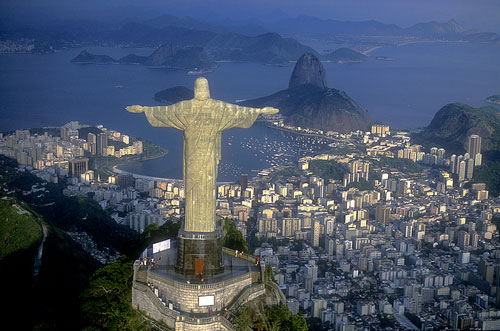 Rio de Janeiro, Brazil
Rio de Janeiro, Brazil
For the last hundred years, Rio has been the most famous and celebrated destination, not only in Brazil, but in all of South America. No other city comes close to matching the sheer physical beauty, the allure of the beaches, the music, the people, and of course, the world's biggest and best-known carnival. Rio has had its ups and downs over the years. At the moment, the city is in a race against the clock to get ready for the summer Olympics next year. Although many improvements were completed for the world cup last year, the next big leap for Rio is undoubtedly the transformation currently underway to host the Olympic games in August of 2016.
A bit of history: Rio was discovered in 1502 and founded in 1565. For years, Rio remained a backwater in the Portuguese empire and second fiddle to Salvador, then capital of Brazil. When gold was discovered in Minas Gerais (see previous blog post), the capital was transfered to Rio in 1763. When Napoleon invaded Portugal in 1807, the entire Portuguese royal family fled to Rio, which became the seat of the entire Portuguese empire, which stretched all the way to Macao, China. In 1822 Brazil became independent of Portugal and was ruled by emperors, until the country became a republic in 1889. Rio remained the capital of Brazil until 1960, when it was transferred to Brasilia. Rio has been a center for culture and art for decades. Most of all, Rio is best known for its music, especially samba, chorinho, popular music, and of course - Bossa Nova, which was launched in the bars and cafes of Zona Sul (Ipanema and Copacabana) in the late 1950s and 1960s.
Rio's golden age was from the 1930s to the 1950s, when the city was one of the world's most glamorous destinations. In the 1960s and 70s Rio saw the growth of favelas, the shantytowns that ring the city and are embedded into many hills and valleys of the metropolitan area. Rio today is Brazil's second largest city (after Sao Paulo) and the city has about 6 million inhabitants.
Highlights: Many people think that the only things to do in Rio are to enjoy the beaches of Copacabana and Ipanema, and perhaps take a photo atop Sugar Loaf or Corcovado. Yes, these are undoubtedly high on the list of attractions, but Rio offers much, much, more.
Beaches: Rio's best known beaches are Ipanema and Copacabana. Much has been done to improve both in recent years, and they are as beautiful and alluring as ever. Further West, the beaches of Sao Conrado and Barra de Tijuca are less crowded and have good facilities and restaurants. Some of the most beautiful and secluded are Grumari and Prainha, hub of surfers all week long.
Centro: No visit to Rio is complete without visiting the Centro, the city's oldest area. See the grandiose buildings near Praca Tiradentes, such as the National Theater, built in 1905. Visit the Paco Imperial, the palace where the emperors used to live, now a museum. The Real Gabinete de Leitura has stunning interiors and a book collection that is Rio's Library of Congress. If you visit one church, make it either the Igreja de Nossa Senhora de Se or the Mosterio de Sao Bento. Do not miss coffee and a pastry at Confeitaria Colombo, one of Rio's oldest coffee and pastry shops (also serving light lunches) at Rua Goncalves Dias #32. Near Centro are Lapa, home of Rio's most popular nightclubs (see below section on music), as well as Santa Teresa, one of Rio's oldest neighborhoods, built on the hills overlooking the old downtown. The other notable sight in this area is the new Cathedral, built in the 1970s with a conical structure and 180 ft ceilings, featuring beautiful stained glass panels. When visiting Lapa, do not miss Escaderia Selaron, a handmade staircase created by a Chilean born artitst who devoted his life to collecting tiles and mosaics, running up 215 steps and now one of Rio's most visited sites.
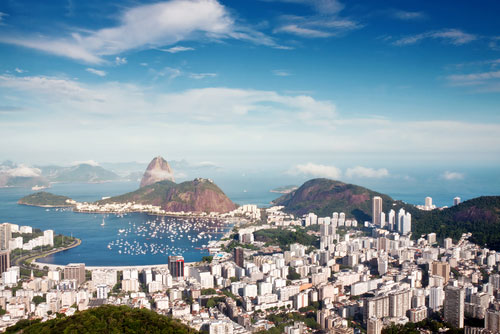 Sugar Loaf and Corcovado: The views from Rio's two top attractions do not disappoint, no matter how many photos you have seen before. To visit Sugar Loaf (Pao de Acucar), go to the ticket window near Praia Vermelha. The ticket costs $20 per person, and the cable car runs from 8am until 8pm. The best time to go is at sunset. There are two cable cars: the first to Urca mountain, then the second which will take you to Sugar Loaf, about 1000 ft over sea level. There is a good restaurant Cota 200 at the Urca level, where you can enjoy lunch or a drink in the evening.
Sugar Loaf and Corcovado: The views from Rio's two top attractions do not disappoint, no matter how many photos you have seen before. To visit Sugar Loaf (Pao de Acucar), go to the ticket window near Praia Vermelha. The ticket costs $20 per person, and the cable car runs from 8am until 8pm. The best time to go is at sunset. There are two cable cars: the first to Urca mountain, then the second which will take you to Sugar Loaf, about 1000 ft over sea level. There is a good restaurant Cota 200 at the Urca level, where you can enjoy lunch or a drink in the evening.
Corcovado is higher, over 2,000 ft over sea level, and is open from 8am until 7pm. If the day is cloudy or overcast, do not visit Corcovado, as chances are you will not see very much. You can reach the summit by either driving up or taking the train, which runs every 30 minutes from the base of the mountain.
Gardens and nature: Rio is surrounded by the world's largest urban forest, the Floresta da Tijuca, one of the few remaining areas of the original Mata Atlantica, or coastal jungle. If you are interested in nature and gardens, visit the Jardim Botanico, created the the Portuguese king about 200 years ago, and also visit the Sitio Burle Marx, the estate of South America's most famous landscape architect, about 1 hour West of Rio. Sitio Burle Marx is by appointment only, at 930a and 130pm Tue-Sat.
Outdoor Adventures: Rio offers active travelers a wide range of options. Best places to bike include Copacabana and Ipanema, as well as around the Rodrigo de Freitas lagoon, by renting bikes in each area. Hike up Gavea mountain, or in the Tijuca forest, as well as up to Corcovado. There are also opportunities to rappel down Urca mountain, handglide (in tandem, with an experienced pilot), sail, and much more.
Music: Some of the best known places to listen to live music are in the Lapa area. The star attraction here is the Rio Scenarium, three attached houses that are packed nightly, featuring two different bands starting at 8pm or so, followed by heavy duty samba at 10pm nightly. The cover charge is $15US plus drinks, and the club stays open until 5am. The other notable club for samba is Carioca da Gema, nearby. For Bossa Nova enthusiasts, head straight to Vinicius Show Bar, which features a different group nightly. Located at Ipanema's Rua Vinicius de Moraes #39. Starting in September until Carnival, you can watch the various Blocos (neighborhood Samba clubs) rehearse for carnival, by making prior reservations.
Dining: Santa Teresa has many authentic Brazilian restaurants. Some of the best known are Bar do Mineiro (do not miss the black bean fritters), Academia da Cachaca, Sobrenatural, and - if you want the very best - try Aprazivel, which is considered one of the top 10 tables in the city.
Art: Rio has no shortage of museums and galleries. Two of my favorites were the Fine Arts Museum (Museu das Belas Artes) which will give you a good panorama of Brazilian art, and MAR (Museu do Arte de Rio) which leans more modern and features different exhibits year round.
What's Next? One of the biggest projects in Rio is the redevelopment of the old port area. There is an enormous new Museum of Tomorrow being built by Santiago Calatrava, a giant new acquarium (AquaRio), as well as a new museum of Image and Sound going up in Copcabana's Atlantic Avenue. The Metro is being extended all the way to Barra da Tijuca, and there will also be a new monorail linking various areas. The plan is to have all of this ready for the Olympics.
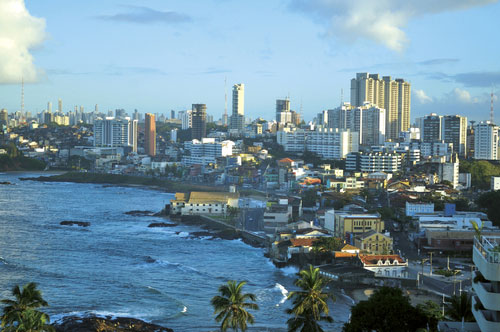 Salvador da Bahia, Brazil
Salvador da Bahia, Brazil
Africa meets South America in Salvador da Bahia, Brazil's third largest city. Nowhere else in the Americas is the heritage of former African slaves so alive, so vibrant, so present. Salvador is the heart and soul of Brazilian culture, music, and many traditions. To understand Brazil, you need to visit Salvador.
Originally founded by the Portuguese in 1549, Salvador was Brazil's first capital. The city grew rich exporting sugar, tobacco, gold, and cattle, all made possible with the labor of millions of African slaves, who were brought in to work vast plantations in the interior of the country. When the capital of Brazil was transferred to Rio in the late 18th century, Salvador started to decline and stagnate, as the country's center of gravity shifted south, first to Rio and eventually to Sao Paulo. Despite its decline, Salvador remained the fountainhead of much of what we associate with Brazilian culture. The city is the cradle of Samba and the home of many of Brazil's most talented singers and musicians - including Joao Gilberto, Maria Bethania, Caetano Veloso, Gilberto Gil, and many others; Salvador is also the home of Jorge Amado, Brazil's best known writer, as well as many celebrated filmmakers, artists, and cultural icons. Today, Salvador is a city of over three million people.
Highlights: The most interesting part of Salvador is the Cidade Alta (Upper City), which is where you will find the largest concentration of colonial architecture in the Western Hemisphere. Start with a visit to Pelourinho, the Unesco World Heritage Site filled with colorful colonial buildings and many beautiful churches and convents. The area is currently being restored, and it is filled with pedestrians day and night. Salvador has over 100 churches. In the Pelourinho area, the most notable is the Igreja e Convento de San Francisco. The interior of the church is a spectacular display of Brazilian baroque taken to its nth degree. Do not miss the convent courtyard, housing the largest collection of hand painted Portuguese blue and white tiles in the country. Take time to wander around the Pelourinho, as every street has a surprise in store. Other notable sites are the Afro-Brazilian museum, the famous Largo do Pelourinho (the single most photographed square) as well as the gallery of Pierre Verge, a French photographer who settled in Salvador and has a gallery where you can admire some of his remarkable work (off Se Square). You can take the Lacerda elevator, an art deco wonder, which will whisk you to sea level in seconds.
Beyond Pelourinho - Other notable sites are the old Mercado Modelo, the original customs house, as well as the Solar do Unhao, a historic building on the bay which now houses the Museum of Modern Art. North of the center is the famous Nosso Senhor do Bonfim church, a site of pilgrimage and miracles for faithful Catholics as well as followers of Candomble's, the religion brought by African slaves which lasts to this day. Take time to visit some of the old forts, especially the impressive Santo Antonio, South America's oldest lighthouse. Another area that is a destination for foodies and music lovers is Rio Vermelho, where you will find a great local restaurant called Casa de Tereza (Rua Odilon Santos 45).
All in all, I enjoyed my time in Salvador, and only wish I had stayed longer. The city is a diamond in the rough, and reminds you of Cartagena or Havana 30 years ago, before the big wave of renovation and renewal started. The energy, light, and atmosphere of Salvador make this city a special destination.
Restaurant recommendations: In the Pelourinho area, try Maria Mata Mouro, considered one of Salvador's best, at Rua da Ordem Terceira 8. Another recommended restaurant is Bistro Cuco. If you want to have a meal by the sea, try Amado, Lafayette, or Soho (Japanese), all on the water's edge. A great place for ice cream in the Pelourinho is Glace la Porte, across from S. Francisco church.
Special experiences: I am traveling with VIP Tour (Signature DS) who has done a fantastic job organizing my time here. VIP Tour's local team is lead by Conor, one of the best and most knowledgeable guides anywhere. VIP tour can arrange for cooking classes with local chefs, lessons in learning the acrobatic capoeira (Brazilian Martial arts), witnessing a candomble ceremony, and much more.
Salvador is also the gateway to a number of special places in the region. Two I would love to visit when I return are Chapada Diamantina National Park (5 hours' drive West or 45min flight 2X per week) and the stunning beaches of Itacare and Trancoso, due South.
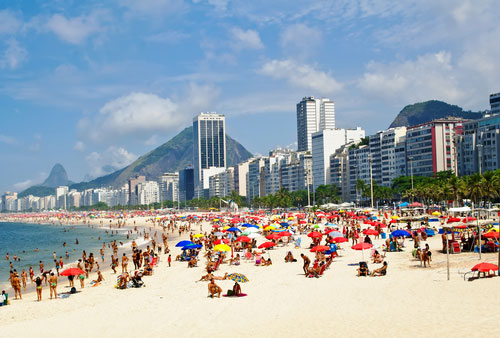 Salvador da Bahia, Brazil - Where to stay
Salvador da Bahia, Brazil - Where to stay
There are hundreds of hotels in Salvador. Here are three recommendations, based on my own personal visits as well as the best advice of the local experts:
Pelourinho area: This is where most travelers choose to stay. The two top choices are:
Pestana Convento Do Carmo: This is a famous convent, originally built in the 17th century, which was converted into Brazil's first historic hotel over 10 years ago. The hotel features 60 rooms, 19 suites and junior suites, and 1 master suite with separate living and sleeping area. Some of the entry level rooms are 'lofts' with two stories and beamed ceilings. The hotel has two big courtyards, one with a round swimming pool. The property has a good restaurant and a small gym on the lower level. Pluses: Hotel is a quiet oasis in a bustling neighborhood. The 'sense of place' is phenomenal as you are sleeping in a historic building. The public areas have high ceilings (do not miss the sacristy, which is over the top and open after 9am by request). My favorite rooms were the junior suites facing the street as they have 2 windows and more light. The minuses: The hotel is high on a steep hill, 5-10 minutes' walk from the main Largo do Pelourinho and from the main San Francisco/Se Square areas. The property could use some freshening up. Very quiet public areas, day and night. if you want a fairly central location and peace and quiet, this is a good choice.
Villa Bahia: This is the top choice of many travelers to Salvador. The property is very central, across the street from S Francisco church, so many of the key sites, restaurants, bars, etc are all easily accessible. The other plus is that the property is superbly run by Bruno Pascal Guinard. The property is made up of two mansions, next to each other. The hotel features a total of 17 rooms in various configurations. Every room is decorated individually with a lot of personality and charm, and rooms are filled with antiques and paintings from all over the world. Rooms face either the S Francisco square, or the back of the building (quieter). There are some rooms that have smaller layouts - but - have terraces, a big plus, There is also a terrace on the top floor, available to all guests, as well as a small plunge pool off the main lobby. The pluses: The central location, the atmosphere on property (much more lively than Convento do Carmo), the service, dining, staff. The minuses: the rooms facing the front can be noisy, especially during feasts, concerts, and festivals. This is a charming hotel with a great sense of place.
Zank: This modern hotel, about 8 years old, is in the Rio Vermelho area, so about 15min or so from Pelourinho and historic area, by taxi. The hotel is made up of two parts: a small historic house in the front (where the lobby/reception is as well as three rooms on the second floor) and a modern wing, where most of the rooms are. Zank is hip, trendy, design-oriented hotel, with a youthful vibe. The hotel features 16 rooms, all with partial or full ocean views. There is a small spa/massage room, as well as a rooftop deck with a long, rectangular swimming pool. The hotel also has a popular terrace, which is used day and night. Rooms are small, starting about 250-270 sq ft, and go up from there. Decor is simple, functional, modern.
On the horizon: Salvador's hotel scene will soon get a big upgrade as there are two buildings in the upper city currently being converted into the Palace Hotel and a new Fasano Salvador, both expected to open in 2017 or so.
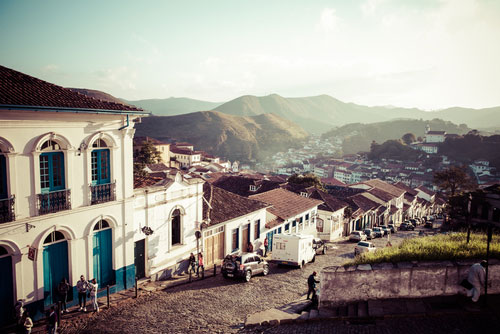 Minas Gerais and its colonial cities
Minas Gerais and its colonial cities
From Salvador, I flew to Belo Horizonte, capital of Minas Gerais state. Most travelers visit this region for the beautiful colonial cities in the interior, built during Brazil's gold rush.
Background: Gold was discovered near Ouro Preto in the late 17th century. By 1710, the gold boom was on, attracting thousands of miners in search of buried treasure. By the mid 18th century, Brazil produced over half of the world's gold, and Ouro Preto's population was more than double that of New York at the time. The wealthy of the region built grand homes and beautiful churches, which you can visit today.
Ouro Preto: The jewel in the crown of all the colonial cities is Ouro Preto, about 2.5 hours from Belo Horizonte. Ouro Preto is about 3000 ft over sea level and sits on a series of steep hills, tied together with cobblestone streets and 2/3 story colonial buildings. The city has over 20 landmark churches. The most notable are the church of Nossa Senhora do Pilar, Santa Ifigenia,and Sao Francisco, considered the best and most beautiful of all. There were churches built for every segment of society - churches for the poor, for the rich, for blacks, and one for slaves, who did the lion's share of the work in the mines.
Ouro Preto was also the cradle of Brazilian independence. Visit the well organized Museu da Inconfidencia to get a perspective on Brazilian history, as well as the beautiful Praca do Tiradentes, the city's center.
About 30 minutes away is Mariana, a charming small town famous for its architecture and for its churches. On weekends, take the steamer train from Ouro Preto, which takes about 1 hour.
If you have time, visit other notable cities such as Tiradentes, Diamantina, and Congonhas - which is nothing to look at, except for its stunning church of Bom Jesus do Matosinhos, which has the famous statues by Aleijadinho, considered Brazil's Michelangelo.
Where to stay: There are no luxury hotels in the area. I stayed at the Hotel Solar do Rosario, small, charming, and well located.
News & Blog Categories
Trending Posts
Recent Posts
Featured Posts
![]()
Travel Insurance with AIG Travel Guard
We have plans. Lots of them. Why? So you can easily find the one that fits. And with our plans, it’s not just about coverage. It’s about unique services. Lost your bag? We can help track it with Bag Trak®. Or we can cover your losses if it isn’t found. It’s simple. We have the coverage options and assistance services you want for your globetrotting travels. Read More
Travel Restrictions by Sherpa What to know

Future Cruise Credits What to know
If you are holding on tight to your Future Cruise Credits (FCCs) waiting for the perfect time and itinerary to put them back in use, many of them expire soon! Now is a great time to check the status of your FCC with an All-Travel Travel Advisor. Read More

Real ID Deadline Extension
Starting on May 3, 2023 travelers who elect to use a state-issued driver’s license at Transportation Security Administration (TSA) airport checkpoints must ensure that they are Real ID-compliant, which is designated by a star in a circle in the upper right corner of the license. Read More



